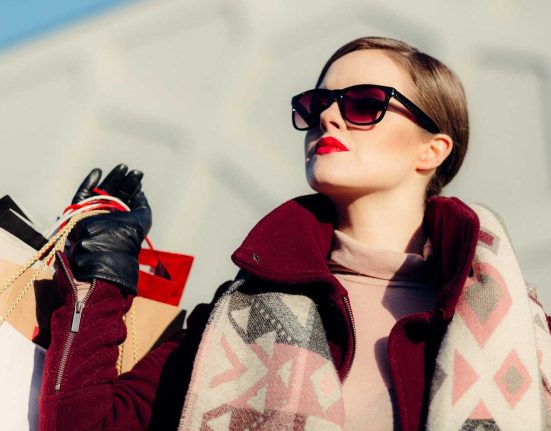How to Create a Classic Yet Appropriately Business Casual Look for Young Men Starting Their Careers?
Starting a career in a professional environment can be both exciting and overwhelming. One of the key aspects that can set you apart from others is how you present yourself, especially when it comes to your attire. Business casual is the go-to dress code for many modern workplaces, and it can be tricky for young men to strike the right balance between looking professional and staying comfortable. This article explores how young men can build a classic yet appropriate business casual look that helps them feel confident and professional as they begin their journey in the workplace.
1. Understanding Business Casual Attire
Business casual attire is a flexible dress code, but that doesn’t mean anything goes. At its core, business casual is about dressing in a way that is neat, clean, and professional, without the formality of a full suit and tie. It’s important to understand that business casual doesn’t mean “casual” in the traditional sense—shorts, graphic tees, and flip-flops are never appropriate. Instead, think of it as the modern alternative to traditional office wear, blending the polished style of business attire with the comfort and relaxed vibe of casual wear.
2. The Essential Pieces for a Business Casual Wardrobe
For young men starting out in the workforce, investing in a few key pieces can help create a versatile and polished business casual wardrobe. These pieces will form the foundation of your outfit choices, ensuring you always look appropriate without the need for an extensive closet.
Shirts
A well-fitted button-down shirt is a must-have in any business casual wardrobe. Opt for solid colors, stripes, or subtle patterns to keep things professional. Avoid overly bold prints or logos. You can also incorporate short-sleeve shirts for warmer climates or situations, as long as they still have a tailored and neat appearance.
Pants
When it comes to pants, chinos are a classic choice. They strike the perfect balance between formal and relaxed, offering a comfortable yet sharp look. Darker colors like navy, charcoal, or khaki are always a safe bet. Avoid jeans in business casual settings unless the office has a more relaxed dress code that specifically allows them.
Blazers and Sweaters
A well-tailored blazer can elevate any business casual outfit. While not always necessary, having one on hand for meetings or more formal occasions can make a big difference. For a slightly more relaxed look, sweaters and cardigans are also a great choice. They can be layered over a button-down shirt or worn with a neat pair of chinos for a polished yet comfortable outfit.
Shoes
Footwear is crucial when it comes to business casual. Opt for loafers, brogues, or derbies in neutral colors like brown, black, or tan. Avoid sneakers or sandals, as they are generally not considered appropriate for a business setting. Always ensure your shoes are clean and well-maintained to convey a professional image.
3. Key Guidelines for Styling Your Business Casual Look
While the individual pieces you wear are important, how you style them is equally crucial. The right balance of formality and casualness will help you appear polished without looking out of place. Here are some essential styling tips for young men:
Fit is Key
Regardless of the type of clothing you’re wearing, fit is everything. Clothing that is too tight or too loose can ruin an otherwise sharp outfit. Make sure your shirts are well-fitted, your trousers hit at the right spot, and your blazers or sweaters have a tailored silhouette. The key is to look neat and well-proportioned.
Color Coordination
Choosing the right colors can make a huge difference in how polished you appear. Stick to neutral tones for the bulk of your outfit—navy, gray, black, and white are timeless and versatile. If you’re feeling adventurous, you can add pops of color through accessories like ties, socks, or pocket squares, but make sure they complement the overall outfit rather than detract from it.
Layering
Layering adds dimension and interest to your outfit while also allowing for versatility. For example, layering a sweater over a button-down shirt or adding a blazer on top can elevate the look. Keep the layers balanced and avoid overloading with too many items, as simplicity and restraint often lead to the most stylish results.
4. The Role of Accessories in Business Casual
Accessories can be the finishing touch that ties your business casual look together. However, they should always be subtle and appropriate for the workplace. Here’s how to choose the right accessories for a professional yet stylish appearance.
Watches
A classic, simple watch can add sophistication to your business casual outfit. Opt for a leather or metal band, and avoid anything too flashy or oversized. The goal is to keep it understated and elegant.
Ties and Pocket Squares
While not always necessary in business casual settings, a tie or pocket square can be added for a more formal touch when needed. If you’re unsure, a simple, solid-colored tie can instantly enhance your look for meetings or client-facing situations.
Bags
A well-made leather briefcase or a sleek messenger bag can elevate your outfit and help you carry your essentials. Avoid overly casual bags like backpacks, unless your office culture specifically allows them.
5. Maintaining a Consistent Image
One of the most important things to remember as a young professional is that your image is a reflection of who you are. Consistency is key in projecting a polished and professional appearance every day. This means adhering to your company’s dress code, maintaining the cleanliness and quality of your clothing, and ensuring that every element of your outfit aligns with the standards of business casual.
Conclusion: Building Confidence through Your Appearance
As you embark on your career journey, creating a business casual look that is both classic and appropriate will help you build confidence and establish a professional presence. By investing in the right clothing pieces, paying attention to fit and styling, and incorporating the right accessories, you’ll ensure that your appearance communicates that you are a serious, capable, and stylish professional. Keep these guidelines in mind, and you’ll be well on your way to mastering business casual and making a positive first impression at work.









